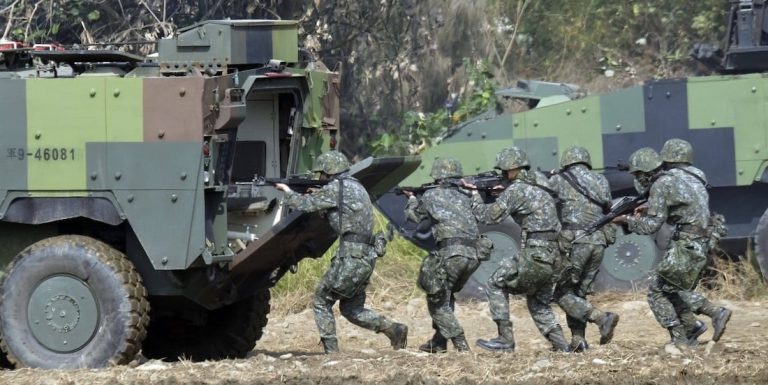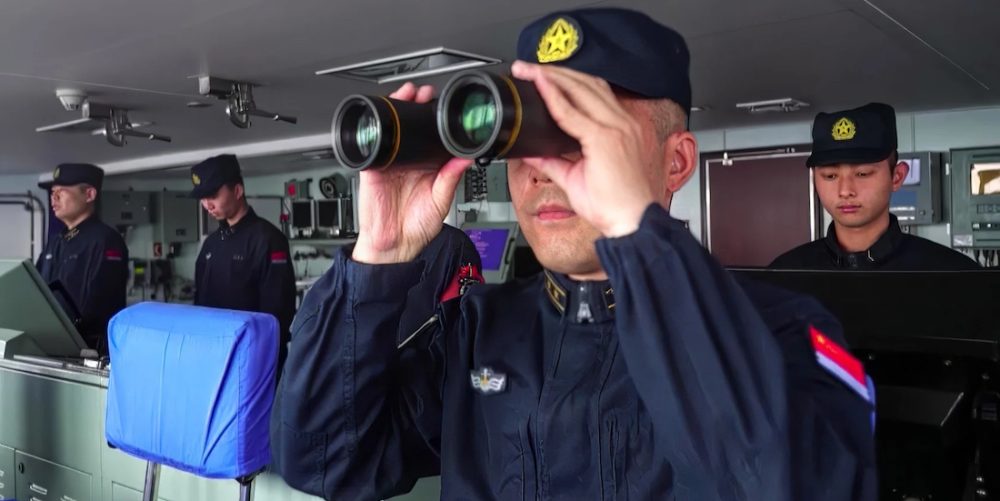
Washington sends clear signal with military footprint near China’s red lines
New York, N.Y. – The quiet but steady increase in U.S. military personnel stationed in Taiwan has stirred sharp concern in Beijing, with observers warning that Washington’s move could test the limits of China’s strategic patience.
According to a recent article in the South China Morning Post, over 500 U.S. troops are currently deployed in Taiwan—a significant uptick that risks inflaming already volatile U.S.-China relations.
The article cites anonymous military analysts and diplomatic sources, highlighting how Taiwan’s de facto alliance with the United States is evolving into a more structured military cooperation. This increase, though incremental, marks the largest presence of American troops on the self-ruled island since the two countries severed formal diplomatic ties in 1979.

From Strategic Ambiguity to Strategic Clarity
The Pentagon’s decision to send hundreds of troops to Taiwan comes as the Biden administration works to reinforce what it calls “integrated deterrence” in the Indo-Pacific region. According to the South China Morning Post, this includes not only training exercises but also embedded U.S. military units working closely with Taiwan’s defense forces.
One unnamed source quoted by SCMP suggested that these troops are not merely advisors but include combat support personnel and logistics experts. “This marks a shift in posture from symbolic support to operational integration,” the source said.
The move is in line with recent U.S. defense policy shifts that aim to “normalize military cooperation” with Taiwan, a trend that includes weapons sales, training programs, and joint intelligence gathering.
China’s Red Lines Are Being Tested
Beijing has repeatedly stated that foreign military presence on Taiwan constitutes a violation of its sovereignty and a provocation. Chinese Foreign Ministry spokesperson Mao Ning recently reiterated that any such action crosses a “red line” and would provoke a “firm response.”
According to the SCMP article, Chinese military planners have been closely monitoring American troop levels in Taiwan. The article also notes that China has increased military patrols near the Taiwan Strait, signaling its readiness to respond to what it perceives as a serious geopolitical provocation.
In 2022, the Chinese government officially downgraded ties with Lithuania after the Baltic nation allowed a Taiwanese representative office in its capital. This suggests Beijing is willing to impose real diplomatic and economic costs for what it sees as infringements on its One-China policy.
Implications for the Indo-Pacific Region
The troop increase in Taiwan is part of a broader pattern of U.S. engagement across Asia, including military agreements with the Philippines, joint drills with Japan and South Korea, and Quad cooperation involving India and Australia. The SCMP report suggests this regional approach could be designed to contain China’s influence and maintain freedom of navigation in the South China Sea.
However, critics argue that such actions risk further militarizing the region and may trigger an arms race or even military conflict. Former U.S. diplomats and defense officials caution that while supporting Taiwan is crucial, it must be done in a way that does not provoke open war with China.
What This Means for Taiwan’s Future
For Taiwan, the presence of U.S. troops may serve as a symbol of international solidarity, bolstering local morale and signaling to the world that Taipei is not alone. However, the same presence could also make Taiwan a flashpoint in U.S.-China rivalry.
The SCMP article raises the question of whether Taiwanese leaders are prepared to manage the strategic consequences of deeper military ties with the U.S. while maintaining peaceful cross-strait relations.